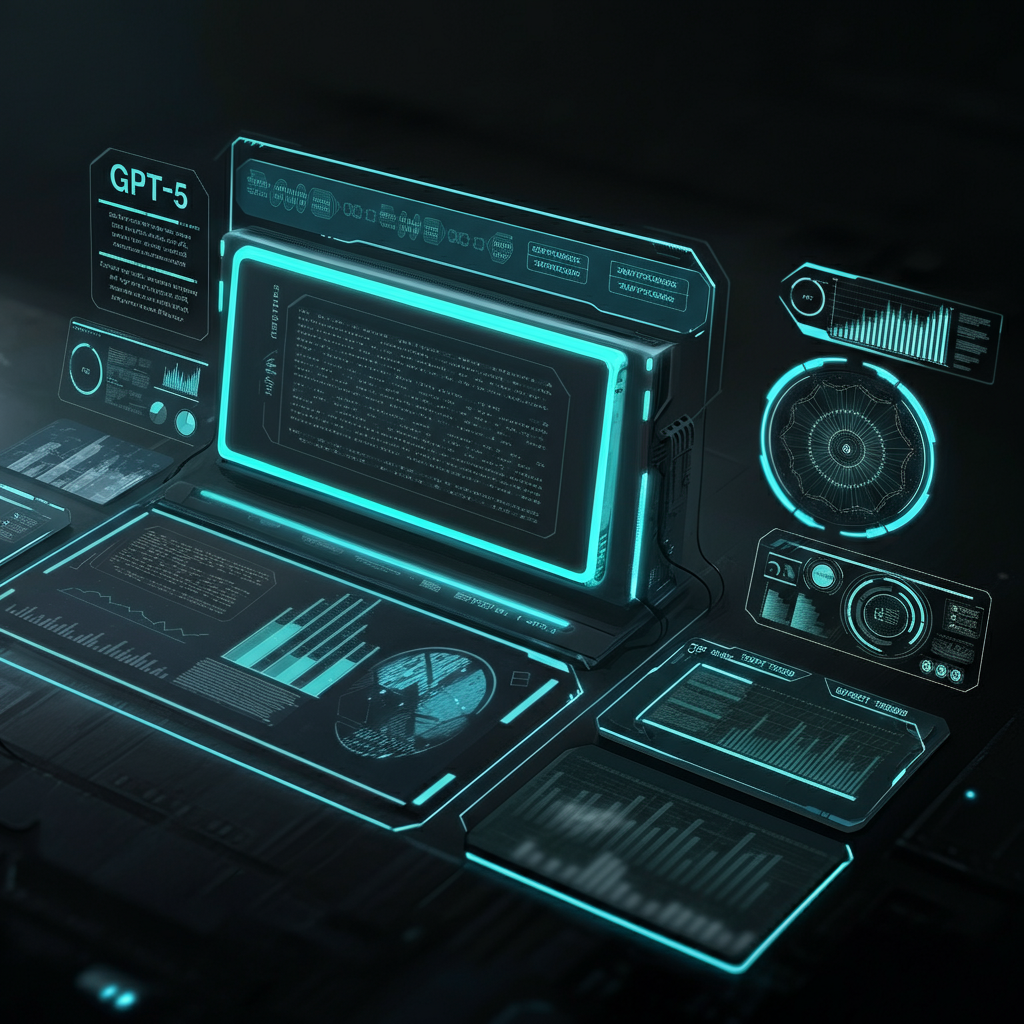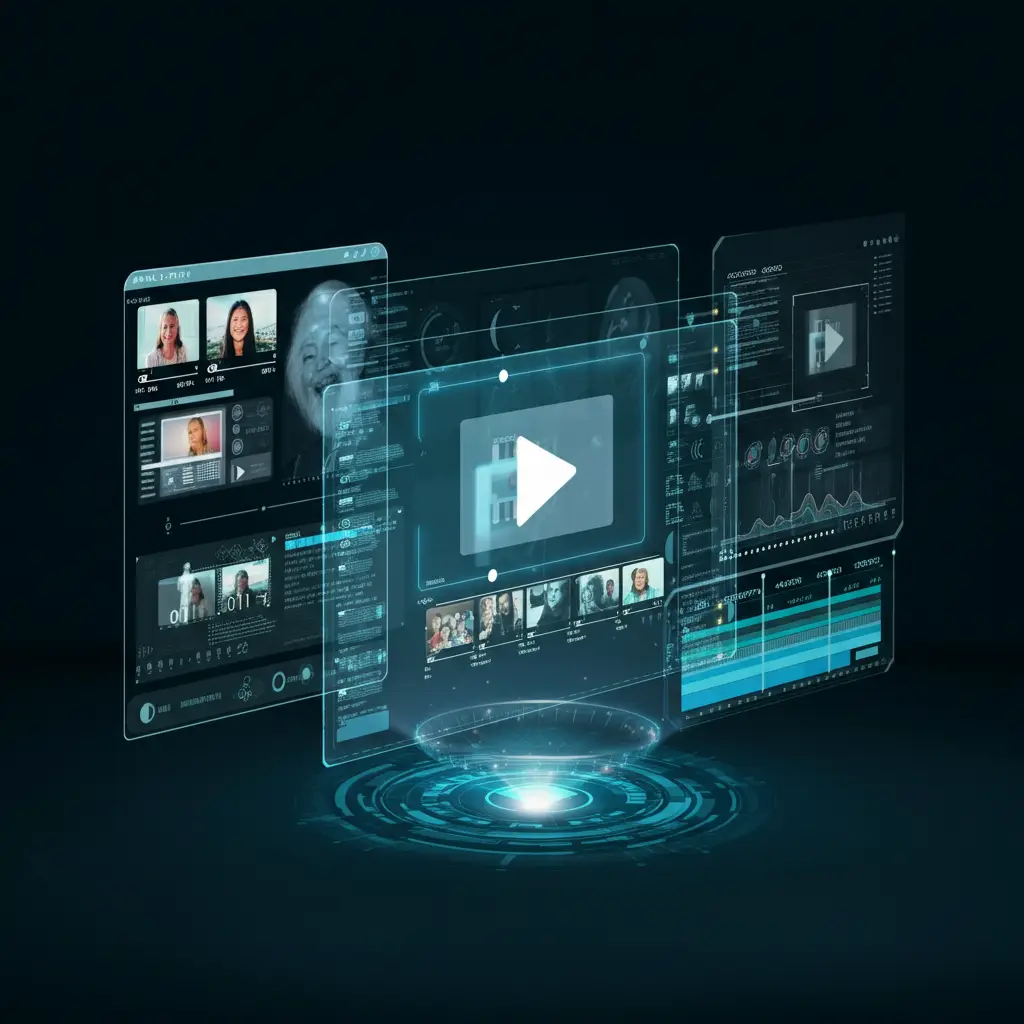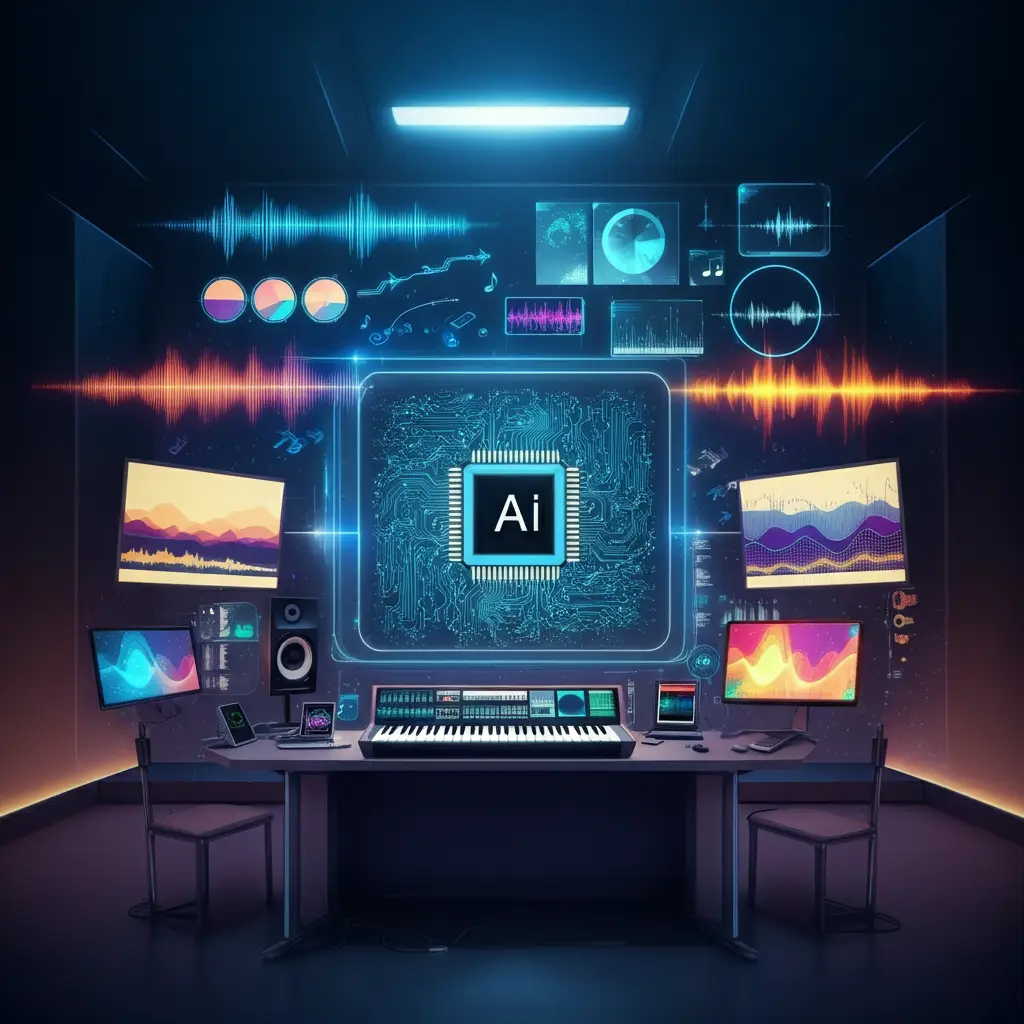Introduction
Artificial Intelligence (AI) has moved beyond the realm of speculation to become a key element enhancing industries across the globe. At the center of this revolution lies generative AI, a branch of AI that has radically reshaped how humans create, design, and consume. From designing visual masterpieces and composing original musical scores to optimizing video production workflows, generative AI is proving to be one of the most dynamic forces in modern technology. By 2024, its reach has extended into almost every facet of business, entertainment, and education, with capabilities that continue to astound.
Core technologies like Generative Pre-trained Transformers (GPT), large language models (LLMs), and Generative Adversarial Networks (GANs) underpin this evolution. These AI tools analyze patterns from vast datasets and use them to create something entirely new—whether that’s a unique piece of art, an innovative architectural design, or a deeply personalized email campaign. Key products, like OpenAI’s GPT-5 advancements, are enabling professionals and individuals alike to streamline workflows, refine output, and scale creative power in ways that were unimaginable even five years ago.
Generative artificial intelligence has applications across various industries, from healthcare and finance to entertainment and education. However, this explosion of potential brings with it significant ethical, technological, and social challenges. Can generative AI democratize creativity, or will it widen the gap between those with access to cutting-edge tools and those left behind? How do we balance efficiency with human originality? This article dives deeper into advancements, applications, and challenges, providing a comprehensive understanding of generative AI’s present and future.
What Is Generative AI?
Generative AI refers to machine learning techniques capable of creating new content rather than merely analyzing existing information. Unlike traditional programming, where actions are determined by strict pre-set rules, generative AI essentially “learns” creation by identifying and mimicking patterns in massive datasets. Advanced text generation technology, realistic image generation AI, and conversational bots are all products of generative AI models.
Its applications are multidisciplinary. For example:
A marketer uses generative AI to draft hyper-personalized email campaigns based on user behavior.
A designer creates detailed 3D models and digital assets for video games using image generation AI.
An educator deploys generative AI to create adaptive learning modules customized for different student learning paces. An AI model can significantly enhance the accuracy and reliability of the generated content, addressing concerns related to misinformation and ethical considerations.
These capabilities are underpinned by the sophistication of tools like MidJourney, Runway, and Meta AI’s generative frameworks, which rely heavily on vast computing power and nuanced algorithms.
Definition and Explanation of Generative AI
Generative AI refers to a type of artificial intelligence that leverages machine learning models to create new content, such as text, images, music, or videos. These generative AI systems learn patterns and relationships from vast datasets and use this knowledge to produce original content that mirrors the style and structure of the training data. This technology is revolutionizing various fields, enabling artistic expression, enhancing content creation, and even aiding in data augmentation. By understanding and mimicking the intricacies of human creativity, generative AI systems are pushing the boundaries of what machines can achieve in the realm of creative endeavors.
How Generative AI Works
Generative AI operates through the use of a specialized machine learning model known as a generative model. These models are trained on extensive datasets comprising existing content, such as images or text, to recognize and internalize patterns and relationships within the data. Once the training phase is complete, the model can generate new content that closely resembles the training data in style and structure. This process involves a sophisticated blend of algorithms and statistical techniques, enabling the creation of new text, images, or other forms of content that are both innovative and contextually relevant. The underlying machine learning model is the engine that drives this creative process, making generative AI a powerful tool in modern content creation.
Democratizing Human Creativity
One of the most compelling aspects of generative AI is its potential to break down barriers in traditionally “elite” creative industries. For instance, you no longer need advanced design software skills to produce professional-looking graphics—platforms like Canva seamlessly integrate AI tools for beginners. AI agents play a crucial role in this by making AI tools accessible to users of all skill levels. The same applies to video content, with tools like Pictory enabling small businesses to craft engaging marketing videos with little technical expertise.
Common Applications of Generative AI
Generative AI boasts a wide array of applications, making it a versatile tool across various industries. In the realm of artistic expression, generative AI can produce new and original works of art, such as paintings, music, or videos, pushing the boundaries of creativity. For content creation, generative AI is invaluable, generating new text or images for advertising, marketing, and other purposes, thereby streamlining workflows and enhancing productivity. Additionally, in data augmentation, generative AI can create new data that mirrors existing datasets, improving the performance of machine learning models by providing more comprehensive training data. These applications highlight the transformative potential of generative AI in both creative and technical fields.
Key Advancements in Generative AI Models
By 2024, generative AI isn’t just refined—it’s transformational. Let’s explore advancements across multiple domains.
Text Creation and GPT-5 Advancements

Text generation is one of the flagship areas where generative AI excels. The release of GPT-5 in early 2024 has marked a turning point.
New Features in GPT-5
Cross-Language Mastery: GPT-5 has perfected seamless, high-fidelity translations, with the ability to preserve context and tone.
Intrinsic Analysis: Beyond crafting essays or sales copy, GPT-5 is now capable of analyzing human-written text to suggest edits, predict market trends, or even explore creative alternatives within drafts.
Emotionally-Tuned Dialogue: For industries like therapy or HR, GPT-5 generates nuanced content that resonates effectively with specific audiences by analyzing emotional subtext.
Many creative teams now co-create with GPT tools, using them for ideation, outline generation, and even final drafts. This collaboration significantly reduces time and operational costs while achieving excellent results comparable to human expertise.
AI Generated Images

Art and design are no longer reliant on brushes and canvases; instead, algorithms are now mastering aesthetics. Tools like MidJourney and Stable Diffusion allow anyone, irrespective of skill, to design breathtaking visuals just by typing a short description.
AI-generated images are significantly impacting the creative industries, contrasting with human-created art and highlighting the value of human interpretation in the creative process.
Emerging Capabilities in 2024
Cultural Contextualization: AI tools now incorporate cultural sensitivity, ensuring visuals respect local traditions. For example, ad agencies customizing global campaigns benefit from these advancements.
Architectural Details: Image-generation tools are widely used to conceptualize building designs, adjusting material and spatial elements interactively.
Photorealistic Rendering: AI-generated designs now simulate realistic textures, skin tones, and lighting at a level indistinguishable from reality.
This progression has redefined graphic design careers, allowing professionals and amateurs alike to work faster and more precisely.
Impact on Film and Video Production

Video content reigns supreme in 2024, and generative AI is at the helm of production innovation. AI-powered platforms handle storytelling, script breakdown, and even real-time edits. Use cases include:
Dynamic Animations: Creating animations from simple sketches or sentences is now achievable without complex software.
Localized Commercials: Multinational corporations leverage AI-generated, culturally-synchronized marketing videos to connect better with diverse audiences.
Video Adaptation: AI tools reconfigure existing footage for various platforms, adjusting dimensions, duration, and even filters to maximize platform performance (e.g., Instagram, TikTok).
For creators in industries like education and entertainment, these advancements are game-changing. Indie filmmakers, for instance, can automate labor-intensive CGI processes, minimizing costs.
Expanding Applications of AI Music Generators
Beyond core creative industries, generative AI is increasingly applied in unexpected sectors, revealing its vast adaptability.
An AI agent can automate various tasks across apps, enhance productivity, and serve as a dedicated collaborator for data analysis, making it accessible to users of all skill levels.
Generative AI and the Music Industry

The music industry is experiencing a significant transformation thanks to generative AI. AI music generators, such as Amper Music and AIVA, utilize advanced machine learning algorithms to compose music that emulates the style and structure of existing compositions. These AI tools are being used to create new music for various applications, including advertising, film, and even personal projects. Musicians are also leveraging AI music generators to enhance their creative processes, using these tools to explore new musical ideas and augment their compositions. The integration of generative AI in music production is opening up new avenues for creativity and innovation in the industry.
AI in Sustainability
Generative AI is positioning itself as an unexpected ally in sustainability efforts.
Urban Planning Optimizations: AI designs eco-efficient building structures, emphasizing renewable materials and reducing waste.
Environmental Simulation: Energy companies use AI simulation models to assess climate impact and optimize renewable energy sources.
Fashion Sustainability: Brands use AI tools to generate sustainable designs and eliminate waste in the production phase by automating cuts and patterns.
Tools in 2024 allow businesses to prioritize environmental consciousness while reinventing processes to cut costs and reduce their carbon footprints.
AI’s Impact on Small Businesses
Small businesses might lack the resources of global corporations, but generative AI is leveling the playing field. Google Search now incorporates AI-generated overviews alongside traditional results to enhance user experience by summarizing top results, although users are advised to verify the information.
Automated Marketing Campaigns: Platforms generate campaign materials—attractive ads, SEO-optimized web pages, or newsletters—faster than traditional workflows.
Product Visualizations: E-commerce businesses generate 3D product views that engage potential buyers.
Business Chat Applications: Personalized customer interactions are becoming the new norm, enabling smaller enterprises to compete with larger brands for customer satisfaction.
Small entrepreneurs can now access enterprise-grade solutions at significantly lower costs, unlocking unprecedented scalability.
Generative AI in Non-Profit Sectors
The non-profit space is often constrained by time and resources. Generative AI offers solutions:
Customized Outreach Materials: AI radically simplifies creating documents for awareness campaigns, donor newsletters, or event invitations.
Volunteer Engagement: AI-driven chatbots answer questions, recruit participants, and optimize volunteer scheduling.
Financial Allocation Predictors: Non-profits use AI tools to estimate how donations will have measurable impacts, improving transparency and donor trust.
These innovations allow non-profits to devote more energy to their missions while delegating repetitive administrative tasks to AI tools.
The Role of Human Creativity in AI-Generated Content
While generative AI is a powerful tool for creating new and original content, the role of human creativity remains indispensable. Human creativity is crucial in designing and training generative models, ensuring that the AI systems produce high-quality and meaningful content. Moreover, humans are essential in evaluating and refining the output of these models, adding context, meaning, and emotional resonance to the generated content. The collaboration between humans and AI is vital for achieving the best results, blending the strengths of both to create content that is not only innovative but also deeply resonant and impactful. This synergy between human creativity and generative models is the key to unlocking the full potential of AI-generated content.
Challenges Facing Generative AI
While generative AI continues to impress, it’s grappling with several challenges that demand attention.
Meta AI plays a crucial role in integrating AI features across various social media platforms, enabling users to generate content and gain insights.
Algorithmic Bias
AI models are only as unbiased as their datasets. A recurring issue is biases—often reinforcing stereotypes—in text outputs or favoring dominant cultures in image generation. Incorrectly input data risks perpetuating inequality rather than mitigating it.
Data Privacy Concerns
Generative AI requires massive datasets, raising ethical questions about the collection, storage, and usage of personal data. Without robust privacy policies, user protection often takes a backseat to rapid technological advancement.
Digital Divide
Though generative AI is democratizing certain platforms, it’s inherently widening the gap between individuals who have access to advanced tools and those left behind due to socioeconomic or infrastructural barriers. Strengthened global partnerships and open-access models might reduce this divide.
Societal Implications of Generative AI
Generative AI has potential societal repercussions far beyond professional spheres. While it democratizes content creation, it intensifies conversations about authenticity. If every visual on the web is generated synthetically, how do cultural traditions remain unique?
Mass adoption is inevitable, but ethical boundaries must be carefully balanced.
Looking Ahead
By 2024, generative AI has established itself as the catalyst for a new creative revolution. However, addressing challenges like intellectual property disputes, algorithmic fairness, and inclusivity will determine how sustainable and equitable this transformation becomes.
The future of generative AI is not just about machines innovating—it’s about partnerships. By blending the virtues of technology with human insight, we’re paving the way for a creativity-centric world driven by collaboration rather than competition. For creators, businesses, and innovators, the horizon holds unprecedented promise.
Generative AI may be redefining what’s possible today, but its true artistry lies in shaping tomorrow. Will we use this technology to enhance our humanity or replace it? The decision lies with us.
